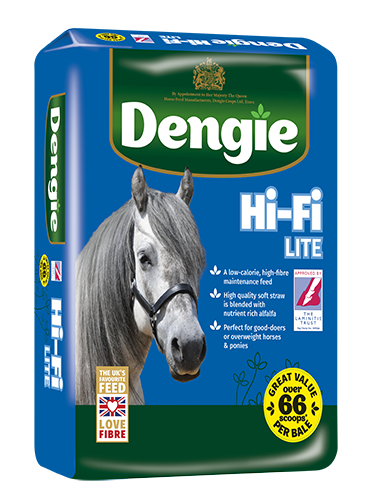Steaming and soaking hay for horses – Laminitis
What is hay?
Hay is high fibre plant material that has been sun-dried so that its moisture content is around 16% or less which stabilises it so moulding and deterioration don’t occur. This means it can be baled and stored so it can be fed to animals when fresh pasture is in short supply. A range of materials can be conserved as hay including grass and alfalfa. Hay is usually left in long lengths of around 18 inches but it can be chopped for those that can’t manage longer length forage.
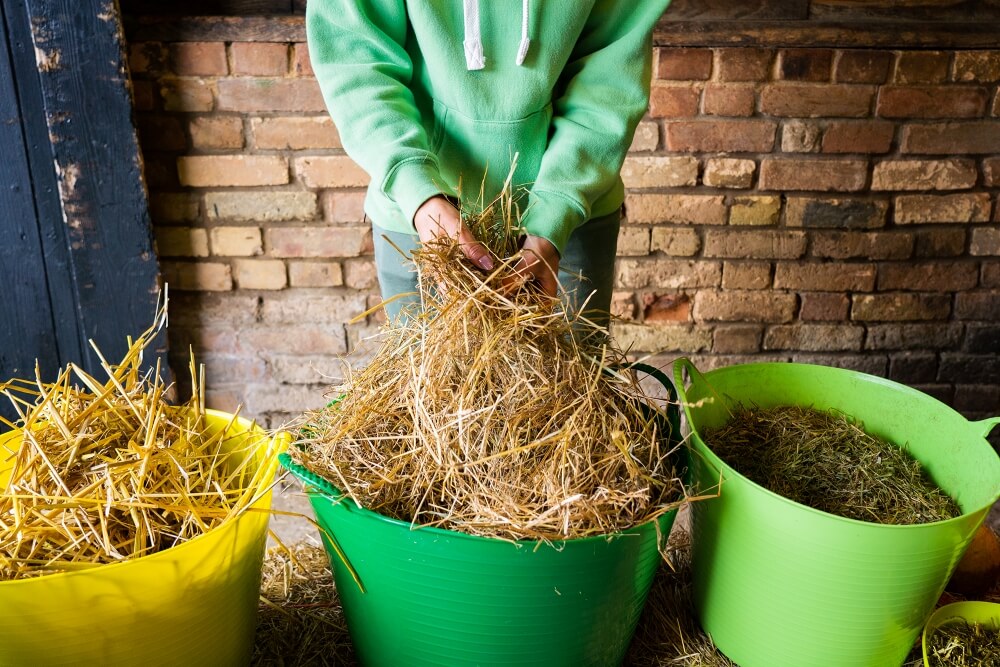
What are the nutritional characteristics of grass hay?
Grass is usually left to grow to maturity before being cut to make hay to maximise yields. This means it is higher in fibre and contains a much higher proportion of indigestible material than when it is young. Grass produces sugar when it photosynthesises and stores any that it doesn’t use for growth. Grass hay will contain a range of sugars in simple forms such as monosaccharides and disaccharides as well as storage forms which are longer in chain length such as fructan. Water soluble carbohydrate (WSC) analysis includes all of these forms of sugar. Levels of WSC in hay can typically range from around 10% to 35%.
Soaking hay for laminitic horses – why is it done?
Soaking hay can be done for two main reasons. The first is to try to reduce its dustiness for horses with equine asthma also known as RAO and COPD. Uptake of small particles (≤ 5μm) can induce hypersensitivity in the respiratory system and lead to respiratory disease. The object of soaking is to swell the size of the dust particles so they are less likely to cause irritation in the respiratory tract. The second is soaking hay for laminitic horses to reduce its WSC content and to improve its suitability for laminitic prone horses and ponies.
How long should you soak hay for?
If hay is being soaked for respiratory reasons then recommendations are most commonly to soak for between 10 and 20 minutes although some advocate soaking for up to 1 hour. The key point though is that the hay should not be allowed to dry out prior to feeding so once the hay has drained it should be given to the horse.
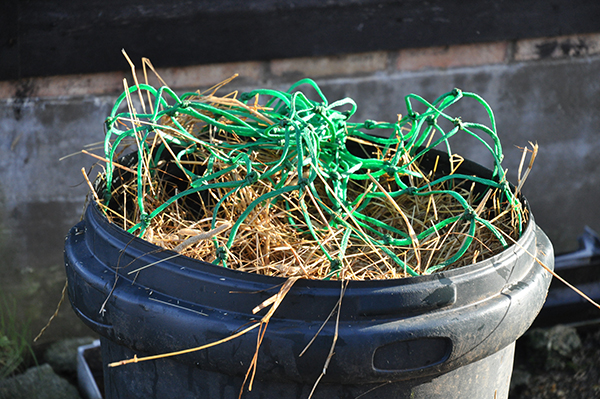
Soaking hay for laminitic horses to reduce sugar content?
If you are soaking hay for laminitic horses and ponies to reduce the sugar content then there are lots of factors to consider not just the timing. Firstly the ratio of hay to water is important and current advice is to use as much water as possible to maximise the leaching of sugar. Some researchers have advocated 10 parts water to 1 part hay but this simply isn’t practical for everyone. The general principle is to use as much water as you can whilst taking into consideration the fact that water is a very precious resource – using rainwater for soaking hay is one possible solution. The other factor to consider is that warmer water will remove more sugar too. Again it is not practical for everyone to use warm water but studies have shown that around 16C was optimum for sugar removal.
If you can use lots of warm water then it is suggested around two hours will help to reduce sugar levels without losing too much dry matter from the hay. Soaking hay for longer starts to increase losses so the horse then has to consume more to ensure they receive sufficient fibre intake. In warmer conditions, soaking hay for more than two hours is also likely to result in the hay starting to ferment and this is not desirable for then feeding to horses. Studies have shown that soaking for longer periods such as 9 hours, also increased the microbial contamination in the hay. Researchers suggest this could potentially cause digestive upsets but how significant this issue is remains to be confirmed as soaked hay has been fed for many years to lots of horses without apparently causing extensive problems. In principle, in cool conditions, it is therefore acceptable to soak hay overnight if you want to but it is important to be aware that the microbial load in the hay will be increased and more is likely to need to be fed to compensate for the dry matter lost from soaking for a long time.
What’s the best way to soak hay for laminitic horses?
Techniques for soaking hay for your laminitic horse vary, but there are now specialist tanks available that have drains and that are on wheels for easy manoeuvrability. If these are out of your budget range then dustbins or even an old bath can be used too. The benefit of a bath is that it has a plug and so the used water can be removed easily without having to lift or tip heavy containers. It also means the hay can be left in while the water drains off so that it is a bit lighter by the time it needs to be used.
What’s the alternative to soaking?
For respiratory health it is possible to use wrapped forages, the wrapping allows a higher moisture content to be retained in the forage which helps to keep dust levels down. Wrapped forages can be more digestible and therefore more likely to result in weight gain and so aren’t always ideal for good doers. It is also possible to use hay replacers that are dried using hot air when the plants are young such as in Dengie Pure Grass. They also tend to be more nutritious and would therefore be too much for some horses if used as complete forage replacers. In these situations steaming hay is a way of making it suitable for those with respiratory issues without having to soak it.
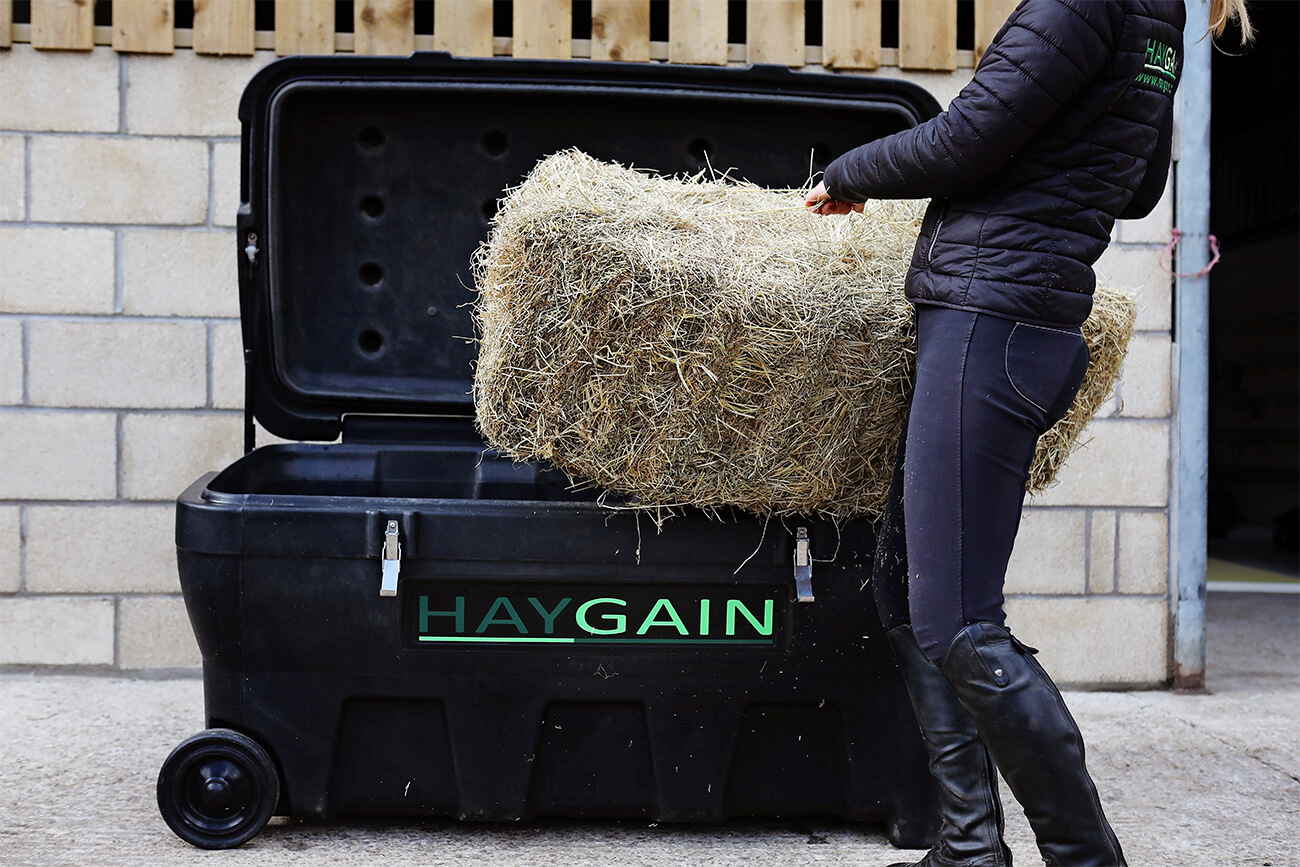
Does steaming hay reduce sugar content?
Not by very much and no where near as much as soaking can. In one study, steaming reduced the WSC content by 3% whereas soaking the same hay reduced WSC by around 30% on average. However, steaming is beneficial for the hygienic quality of the hay and whereas soaking increases the bacterial presence in hay, steaming reduced bacteria numbers by 98%. So whilst steaming hay for horses deals with the respiratory challenges, it is still recommended to soak hay to remove WSC. The researchers in the study soaked the hay first and then steamed it to reduce the bacterial count.
How long to steam hay for horses?
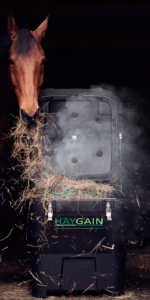
Image courtesy of Haygain
The recommendations for the length of time to steam hay vary according to different manufacturers of commercial steamers. In the studies mentioned above, the steaming was for around 50 minutes. If choosing a steamer that advocates less steaming time it is worth asking what research they have done to show the shorter time frames along with the temperature of the steam is sufficient to kill the same level of bacteria. Although shorter steam times may seem more convenient, it is important to compare their performance. Although steamers are quite expensive to purchase, their performance can not be replicated trying to steam hay yourself.
Other points to consider
If you’re feeding straw to your horse as part of their forage ration then it can also be soaked or steamed to improve its hygienic quality. The sugar content is already low so soaking to reduce WSC is not really necessary. Soaking and steaming may help to soften its structure a bit too which may also improve its palatability.
Wrapped forages should not be soaked or steamed.
In summary, the benefits of soaking hay can be for the respiratory system or to reduce its sugar content. However, soaking hay uses a lot of water, creates a lot of waste water and increases the bacterial count within the forage. Soaked haynets can be very heavy to lift too and so it is important to weigh up all of these factors when considering if soaking hay for your laminitic horse is the right way forward.


